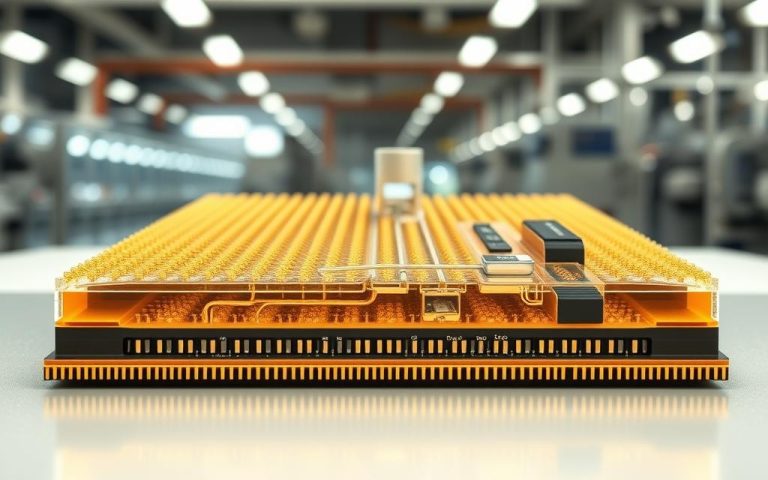Technology & the Brain: Its Impact on Cognitive Development
Digital technology has changed how we interact and learn in today’s world. It greatly affects brain function and cognitive growth, especially in young people12.
Children and teens are spending more time in digital environments. US youth consume about 8 hours of digital media daily. European children spend nearly 3 hours online each day2.
In the UK, mobile phone ownership is extremely high among young people. 97% of 12-15-year-olds and all 16-17-year-olds own smartphones1.
Digital technology offers both benefits and risks to cognitive processes. Researchers are studying how constant digital use affects brain pathways and plasticity. They aim to understand its long-term impact on cognitive growth.
Studies show that excessive digital use may change impulsivity and attention spans. It might also affect cognitive flexibility. Early research links increased screen time to changes in brain activity and structure2.
Digital Technology’s Influence on Brain Function
Digital technology is changing how our brains work. It affects our brain structure and neural connections in significant ways34.
Digital experiences train our brains, stimulating complex mental processes. Research shows how technology impacts our neural pathways:
- Internet searches activate neural networks3
- Computer games can enhance cognitive abilities3
- Digital interactions modify brain connectivity4
Neural Exercise and Brain Plasticity
Our brains adapt remarkably when we use digital platforms. Older adults learning online show increased neural activation3.
Neural plasticity allows the brain to reorganise itself. It creates new neural connections through digital interactions4.
Impact on Brain Structure and Connectivity
Digital technology significantly changes brain structure. Research shows alterations in grey matter density and neural connectivity from technology use4.
| Digital Activity | Brain Structure Impact |
|---|---|
| Social Media Use | Reduced Gray Matter Volume |
| Smartphone Usage | Altered Frontal Cortex Density |
| Video Gaming | Hippocampus Volume Changes |
Changes in Neural Activity Patterns
Digital engagement alters neural activity in attention, memory, and decision-making regions34. Understanding these changes helps us navigate technology’s impact on brain function.
How Does Technology Affect Cognitive Development?
Digital technology shapes cognitive abilities in modern children. Pre-schoolers spend about two hours daily on digital devices. Over 94% have access to touchscreen tablets5. This exposure raises questions about its impact on learning and brain function.
Screen time effects on cognitive development are complex. Children typically spend one to four hours daily in front of digital screens6. This can significantly influence their developmental paths.
Research suggests potential challenges:
- Shortened attention spans
- Reduced social interaction skills
- Potential delays in speech and vocabulary development
- Disrupted sleep patterns
Educational technology offers unique opportunities. Some studies show that well-designed digital tools can support basic maths and literacy skills5. The key lies in intentional, supervised technology engagement.
| Developmental Aspect | Potential Impact |
|---|---|
| Social Skills | Potential Negative Impact |
| Learning Potential | Mixed Outcomes |
| Sleep Patterns | Significant Disruption |
Research on technology’s impact on brain function shows mixed results. Some studies report negative effects, while others suggest neutral or positive outcomes5. Understanding these nuances is vital for parents and educators.
Digital technology is a double-edged sword in cognitive development, requiring balanced and mindful engagement.
The Digital Age and Attention Control
Digital tech has changed how we handle information and focus. Our minds are tested by constant digital alerts and messages. This creates unique patterns of multitasking and mental overload7.

Continuous Partial Attention Phenomenon
Modern digital life encourages continuous partial attention. People try to keep track of many info streams at once8. This greatly affects our ability to concentrate.
Research shows our attention network can be severely disrupted8.
- Attention becomes fragmented across multiple digital platforms
- Cognitive processing slows due to constant task-switching
- Sustained focus becomes increasingly challenging
Multitasking Effects on Brain Function
Digital multitasking creates big mental challenges. Studies show it can harm academic performance8. Our brains can usually handle only three to four visual items at once8.
| Digital Activity | Cognitive Impact |
|---|---|
| Smartphone Usage | Reduced Attention Span |
| Simultaneous Media Consumption | Increased Cognitive Load |
Screen Time and Attention Span
Screen time greatly affects cognitive growth. Children spend 7 to 9 hours daily on digital tech7. Too much screen time may change attention mechanisms9.
Different screen activities have varied mental effects. Watching lots of videos can lower intelligence. However, some gaming might offer small cognitive benefits9.
Memory Processing in the Digital Era
The digital world is changing how we handle and keep information. Digital memory now plays a key role in how our brains work. Technology greatly affects our ability to remember things.
Our visual working memory can usually hold three to four items. This shows the natural limits of our brain’s storage.
Cognitive offloading is a big trend in today’s digital age. People often use digital devices to store and find information. This might affect how well their natural memory works.
- Smartphone dependency can diminish available cognitive capacity10
- Digital device separation may negatively affect mental shifting and working memory10
- Excessive screen time risks cognitive overload11
Not all digital use is bad for the brain. Action video game players have shown better visual short-term memory than non-players. Some studies suggest that controlled digital use might even boost certain brain functions.
The brain adapts to technological interfaces, creating new neural pathways for digital information processing.
It’s vital to understand how digital tech affects memory processing. This knowledge helps us keep our brains healthy in the information age.
Technology Addiction and Brain Health
Digital addiction is a growing neurological challenge in our connected world. Research shows excessive tech use can lead to addiction patterns like substance abuse. This has significant implications for brain health12.
Prolonged digital engagement alters the brain’s reward system. It creates neural pathways that reinforce compulsive technology consumption12.
Cognitive impairment is a critical concern in tech addiction. Excessive digital exposure can shrink the cerebrum and hippocampus. This directly impacts memory retention and cognitive functions13.
Neurological studies show chronic digital stimulation reduces grey matter volume. It also causes significant deficits in attention and decision-making abilities13.
Digital addiction manifests through compulsive device interactions and withdrawal symptoms. People may feel irritable, anxious, or depressed when disconnected from technology. This signals a deep psychological dependence14.
Children and teens are particularly vulnerable due to ongoing brain development. Excessive social media and digital interactions can lead to long-term neurological consequences14.
Understanding these risks is crucial for developing strategies to combat tech addiction. Setting digital boundaries and encouraging offline activities can help maintain healthy cognitive functioning. This can prevent potentially permanent neural alterations13.
FAQ
How does digital technology impact brain development?
Can technology use improve cognitive skills?
What is continuous partial attention?
How does technology affect memory processing?
What are the signs of technology addiction?
Can excessive screen time impact brain development?
How does multitasking with digital devices affect cognitive function?
What is digital dementia?
How can individuals mitigate technology’s negative cognitive impacts?
Does age influence technology’s impact on cognitive development?
Source Links
- https://www.imperial.ac.uk/news/251333/unveiling-impact-digital-technologies-adolescent-mental/
- https://www.jbs.cam.ac.uk/2024/how-digital-media-impacts-child-development/
- https://pmc.ncbi.nlm.nih.gov/articles/PMC7366948/
- https://www.frontiersin.org/journals/cognition/articles/10.3389/fcogn.2023.1203077/full
- https://solportal.ibe-unesco.org/articles/the-impact-of-digital-technology-on-cognitive-processes-and-learning-outcomes-in-early-childhood-evidence-from-neuroscience/
- https://www.celebree.com/striking-digital-balance-the-impact-technology-has-on-a-childs-cognitive-development/
- https://www.frontiersin.org/journals/psychology/articles/10.3389/fpsyg.2021.611155/full
- https://pmc.ncbi.nlm.nih.gov/articles/PMC6430174/
- https://www.nature.com/articles/s41598-022-11341-2
- https://pmc.ncbi.nlm.nih.gov/articles/PMC11688110/
- https://pmc.ncbi.nlm.nih.gov/articles/PMC11592547/
- https://stoneridgecenters.com/2021/03/22/technology-addiction-and-the-brain/
- https://avisarecovery.com/blog/how-does-technology-addiction-affect-the-brain/
- https://www.psychiatry.org/patients-families/technology-addictions-social-media-and-more/what-is-technology-addiction







